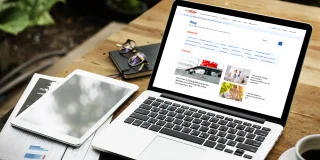If Your Car is Totaled, GAP Insurance Could Help
No one likes having another insurance payment, but Guaranteed Auto Protection (GAP) insurance can be a lifesaver if your car gets totaled or stolen and you still owe a balance on your car loan! With GAP insurance, you won’t be stuck making monthly payments on a car that is sitting in the junkyard, and you can use the money you receive from the claim on a new replacement vehicle. However, GAP insurance doesn’t make sense for everyone, so it’s a good idea to examine if you’re actually in need of it before you go and add it to your current auto insurance policy.
Some dealerships may require that you purchase GAP insurance if you’re leasing a vehicle since the car’s value will depreciate, and the total amount you’re paying for the car will be higher than what the car is worth. But most of the time, you won’t need to have GAP coverage, especially if you’re buying an older, used car or if you put down a large down payment (since what you owe is probably going to be less than the car’s value). However, if you decide that you will need GAP coverage, then you should understand when it’s most useful.
GAP insurance exists to protect drivers in the event the car is considered a total loss, but you still owe more money on the loan than the car is worth. In this case, the insurance will cover the financial obligations and pay off the loan. It’s different than a normal auto insurance policy since it’s only meant to pay the lender back the vehicle’s current cash value — not the current loan balance.
GAP coverage is only meant to protect a driver from the cost of a total loss in two scenarios:
● If you’re financing
● If you’re leasing
If you own the car and have no debt, or if you owe less (smaller loan) than the value of the car, you don’t need GAP insurance. How does one owe more than the actual value of the car?
Cars depreciate in value as soon as you drive them off the lot, some cars faster than others – after a few months, your car could be worth a lot less than what you paid for it or what’s owed on the loan. In the case of an accident where the damages on your car are deemed enough for a total loss, your auto insurance company won’t cover the whole price of the loan, meaning you’ll be stuck paying the difference or what remains after they pay the actual cash value of the car. However, if you have GAP insurance, then your vehicle will be paid in full – the whole amount of the loan and not just the value of the car.
Lastly, if you’ve paid down your car loan so that the balance is lower than the value of the car, then your comprehensive or collision coverage on your auto insurance should cover it and there’s no need for GAP insurance!
Have you ever used GAP insurance? Feel free to share your thoughts and experiences in the comments section below.



